Buddhist art
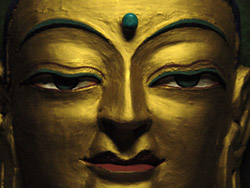 For over twelve centuries Buddhist teachings (Dharma) deeply influenced and guided all aspects of Tibetan life and culture. This is very true in the case of Tibetan art, painting, and sculpture, the function of which is the expression and representation of religious themes. In Tibetan art one finds very little that has no religious meaning. In Tibet each well-established home has a separate shrine room with rich religious objects, which are honored with daily offerings. These religious symbols are a source of happiness, peace, and energy for those who possess Dharma eyes.
For over twelve centuries Buddhist teachings (Dharma) deeply influenced and guided all aspects of Tibetan life and culture. This is very true in the case of Tibetan art, painting, and sculpture, the function of which is the expression and representation of religious themes. In Tibetan art one finds very little that has no religious meaning. In Tibet each well-established home has a separate shrine room with rich religious objects, which are honored with daily offerings. These religious symbols are a source of happiness, peace, and energy for those who possess Dharma eyes.
In Buddhism people do not worship images as the representation of a creator of the world, or as a provider or source of happiness. Instead, they use external objects, such a religious artifacts, as a support or source of inspiration for their spiritual practice. According to the Buddhist conception, the main factor in life is the mind. If the mind has right intention or the right perception of the objects that are being used as a support for religious practice, such as seeing them as Buddhas, it will help develop faith and other mental virtues. In this way the devotee will achieve merit and gain spiritual strength.
Almost all Tibetan art takes its origin from the Buddhist teachings. It is the support of Dharma practice and the tool of Dharma propagation. Buddhist art—and more specifically, tantric art—gives us the opportunity to look at how Buddhism represents itself visually, how is the Buddha and his teachings represented.
Tantric paintings are the visual representations of tantric texts, which outline expedient practices. The deities in the paintings are personifications of the texts and the systems of practice they teach. Tantric art actually compresses all of the important points of the Buddhist teachings into a very tight visual package of symbols.
Deities in the tantric system don't exist as external entities. They're expressions of Buddhahood, they are emanations of a particular Buddhist teaching. These deities are peaceful, fearsome, and wrathful; they're multiheaded and multiarmed, each one suited to the temperament of an individual tantric practitioner. Although the images are visually arresting, they are merely mnemonic devices. For instance, often a deity will have, say, four faces, symbolizing the four Brahma-viharas, the Four Immeasurables-love, compassion, joy, and equanimity—fundamental principles in all Buddhist practice. The four-faced deity is only one very basic example of tantric iconography
When we have a male and a female locked in embrace, usually the male represents the phenomenal world of appearance, existence as we know it—what we hear, smell, taste, and so on. The female represents the Buddhist concept of emptiness, shunyata, the essentially void nature of phenomena. From a Buddhist point of view, nothing can come into existence unless you have emptiness, the purely contingent nature of phenomena. Emptiness is the template out of which phenomena appear and into which they disappear. With the deities embracing we have a union of the two, a representation of nonduality. The male-female union is also a representation of the union of compassion (or method) and wisdom. This is a basic example of how a fundamental Buddhist principle is contained and expressed in tantric art. Understanding the relationship between appearance and emptiness is central to tantric Buddhism, and actually experiencing it, rather than simply knowing it intellectually, is key.
The art helps us to actually experience this principle. In tantric practice, there are two types of meditation: the "generation stage" and the "perfection stage." The generation stage is essentially a visualization practice, using the images depicted in the art as subjects. The deities are visualized in a formal meditation session done one, two, three, or six times a day, for anywhere from five minutes to an hour or more. The meditation can be thought of as a rehearsal of the stages of the path to enlightenment: all the key points are brought to mind, all the steps required are there—the mental states to be accomplished and the negative emotional states to be overcome. Also, throughout the course of one's day, there are activities that may relate to a specific deity that need to be reflected on, whether one is at work or at leisure.
There are so many different subjects in Buddhist tantric art because different metaphors and themes suit different kinds of people. Some may have an affinity for a wrathful deity, some may be more receptive to a peaceful one; and another, more complex mind may be suited to, say, the multilayered symbology found in the form of the Kalachakra, with all of its cogs and wheels representing time.
So, this art is a key to the practice. With perfection-stage meditation, however, imagery is not used. This further stage of meditation, based on a certain level of accomplishment with the generation stage, concerns itself with direct experience with the ultimate view of Buddhist reality—Mahamudra, Dzogchen, the Great Middle Way—without reliance upon fabricated symbols.
The pure native Tibetan art of the Bon tradition was lost with the coming of Buddhism to Tibet from India in the eighth century. The main source of the Tibetan art that has flourished since then is the iconographical art of India with strong influences from China and Persia.
The history of Tibetan art has two stages. The first stage begins in the seventh century and the second stage in the eleventh century.
In the seventh century, King Srongtsen Gampo (617-698) [18] married Princess Thritsun, the daughter of King Amshuvarman of Nepal and Princess Wen Ch'eng Kun Chu, daughter of Emperor T'ang T'ai Tsung of China. Both these princesses were devoted Buddhists, and they brought many priceless religious objects with them to Tibet . The most famous and one of the earliest images in Tibet , the Jowo, was brought to Tibet from China by princess Wen-Ch'eng. Many other precious Buddhist images and paintings by many skilled artists were brought to Tibet from both Nepal and China . In the seventh century, the Jokhang temple in Lhasa and the other 108 Thadul and Yangdul temples were built, and they were furnished with figures of religious importance. Most notably at the end of eighth century, King Thrisong Detsen (790-858) built the famous Samye monastery, so rich in Buddhist iconography. Until the early ninth century successive kings of the Chogyal dynasty built many religious monuments.
Most of the artists of the earlier stage were non-Tibetans. But they selected among the Tibetans handsome men and beautiful women to be the models of the images and paintings of Buddhist male and female teachers and deities. Also, according to historical texts, many beautiful Buddhist images spontaneously arose from the earth and from rocks, and artists used those miraculous images as models for Buddhist pictorial arts. Slowly a new kind of architecture and pictorial art of Tibet emerged. In any case, the influence of Nepalese, Indian, Chinese, and Persian art was great. For example, in the construction of Samye monastery, it is said that each of the three stories of the main temple were built with inspiration from the arts and designs of three different countries: the ground floor is the style of Tibet , the second floor of China , and the top of India.
From the eleventh century, with the emergence of different artistic schools, the second stage of Tibetan art developed. There were many schools or traditions, but it seems that there are six major ones that were important and popular at one period or another.
The first one is the Kadam school. In the eleventh century the kings of Guge in Western Tibet patronized the Buddhist art of the Tibetan tradition. For geographical reasons this early school was strongly influenced by the art of Kashmir, which itself was influenced by eastern Indian art developed under the rule of the Gupta kings (fourth-seventh centuries) and Pala kings (eighth-twelfth centuries) of India. This style of art is found in Spiti, Guge, Purang and Tsaparang.
The second school is the Palri or Nepalese school, which developed in the fourteenth and fifteenth centuries. Nepalese tradition was influenced by Pala art of eastern India . The arts of this school are found throughout Tibet and especially in Tashi Lhunpo monastery and also in some monasteries in eastern Tibet . The Nepalese school was the mainstream of Tibetan painting up to the fifteenth century.
The third school is the Menri. In the beginning of the fifteenth century, Menlha Thondup, a famous artist from southern Tibet , founded the Menri tradition, which incorporated the Chinese style of the Mongol period. There is also a second Menri tradition known as New Menri. In the seventeenth century, Choying Gyatso, a follower of the Menri school, started his own school. He painted the wall paintings of the Chokhang Shar temple and the stupa containing the body of the first Panchen Lama (1570–1662) in Tashi Lhunpo.
The fourth school is the Khyenri school. In the sixteenth century Khyentse Chenmo of Gongkar Gangto started a new tradition of art. But later this school merged with the new Menri tradition.
The fifth school is Karma Gardri. In the sixteenth century Namkha Trashi founded his own school incorporating the Menri, Indian, and Chinese traditions. This tradition was propagated by the artists Choje Trashi and Karma Trashi.
The sixth school is the Dopal school. In the seventeenth century, during the reign of the fifth Dalai Lama (1617–1682), the artists Epa Kugpa (or Hordar) and Tulku Pagtro established their own traditions. A college of art named Dopal situated at the foot of the Potala palace in Lhasa follows this tradition. So the tradition of these two artists and of this college became known as the Dopal school.
In Tibet there are rich traditions of various crafts, such as weaving, sculpture, carving, metal work, carpentry, and so forth. But the significances of thangkas or Tibetan pictorial scrolls is important as an illustration of these crafts. Thangkas are an upright rectangular form mounted and framed with silk or brocade. They are sacred objects hung on the walls of temples and in shrines as objects of homage and as the support of spiritual practice. But nowadays we also find them as decorations in houses and hotels.
Thangkas or scrollpaintings were, from the first, religious in nature. The first thangka originated in India and depicted the Wheel of Life, a sort of diagram showing the world of samsara and how to get out of it. Piligrams carried them on their backs and unrolled them in village squares along their way for use in illustrating their talks on the basic truths of Buddhism.
Thangkas developed much wider use in Tibet , a country where for a long time a large portion of the population was nomadic. In the nomadic Tibet , it was the practice of local rulers to travel about their regions setting up their princely camps in various places and holding court in great, richly appointed tents. The Tibetan religious orders adopted this pattern from them. The abbots, as they rode in caravans, went like kings, wearing high gold hats of office and surrounded by attendants carrying banners. The monks were great in numbers and carried with them everything necessary for a full-scale religious establishment. Thangkas, being portable, were used instead of frescoes. This nomadic monasticism was a fundamental part of Tibetan spiritual life; one of the Tibetan words for monastery, gar, in use of this day, means “camp.”
As the traveling monasteries were offered land and forts by local kings and landowners, they hung their thangkas in the shrine rooms of the permanent buildings. Ceilings and columns were painted with decorative work. Manuscripts were illuminated. Large mandalas were painted to place under the shrines. The word thangka comes from the Tibetan thang yig, which mean “annal” or “written record.”
The art of thangka was a family trade, passed on from father to son in a long apprenticeship. When a thangka, a fresco or the embellishment of a monastery was commissioned, the master was accompanied in the work by a group of students, including his sons. The master ad his apprentices were welcomed with a feast and there was a weekly feast for them as long as it took to complete the work. They were presented with gifts at various times, usually at the time of the feasts. They were paid in commodities, such as cattle, quantities of butter, cheese, grain, jewelry, or clothes.
Occasionally thangkas were done in silk applique or embroidered on silk.
It is widely thought that thangka painting is a form of meditation. This is not true. Though all the thangkas have religious subjects, most of the artists were and are lay people. As has been said, the art is passes down in families. It is true that a master thangka painter has knowledge of iconographical detail that might easily awe a novice monk. Naturally, also, artists have a sense of reverence for the sacredness of their work. Nevertheless, the painting of thangkas is primarily a craft rather than a religious exercise. One exception is the nyin thang (“one-day thangka”) practice in which, as part of a particular sadhana, while repeating the appropriate mantra, uninterruptedly, without sleeping, a monk paints a thangka in one twenty-four hour period.
Thangkas were painted on commission for noteworthy social occasions; for the welfare of a newly born infant, for the liberation of one just dead, at the commencement of some new project. Often artistically inclined gurus or abbots painted thangkas to glorify their lineages or convey the richness or inspiration of their tradition.
Thangkas are used as objects of adoration, but mainly as a means to refine a meditative visualization. They are displayed over shrines which are bedecked with butter lamps, incense and offerings and ritual objects of many kinds. Thangkas of the lives of saints are displayed for the celebrations of holidays associated with them. Special thangkas painted by great teachers of particular lineages are also hung for yearly ceremonies. Practitioners hang the thangkas of their yidams or gurus over the shrines in their rooms as constant reminders of their presence. Formal rooms were hung with thangkas in Tibet to receive important guests such as kings, government officials or eminent spiritual teachers. Sometimes thangkas hung in the audience halls of local rulers.
Thangkas were never bought or sold, but changes hands only as gifts.
Sculptured images in the traditional manner are first modeled in sealing wax (T.: be; Tt.: ‘bes). Clay is molded onto a wax image and the wax melted away. The metal cast in the clay molds is usually pure copper. Very old images are found to have been cast in bell metal, a mixture of copper, silver and pewterlike alloys. Once cast, the images are gilded. Then they are often highlighted with painted colors. Ornaments are sometimes inlaid with jewels and, quite frequently, the hair, lips and eyes are touched with color. There is a special “opening of the eyes” ceremony, just as with thangkas, when the eyes are painted in. The images are hollow and after the “eye-opening” they are consecrated in a ceremony, which involves filling them with relics and mantras. Before the bottom is sealed, as the very last thing, grains of precious stones are put into the image to add a sense of basic richness. It is on account of this practice that images have frequently been broken into by those hoping to find valuable gems.
As a social phenomenon, making images was much the same as thangka painting. The art and lore were passed down in families and through apprenticeship. A sculptor and his apprentices having come to a monastery to provide it with a new treasure, were feted, given gifts and paid just as were the thangka painters.
There are three other types of painting, which differ from the others in respect to design, size, and use. The first is kyilkhor in Tibetan or mandala in Sanskrit. It literally means the “assemblage.” It is mainly the floor plan of the residence of tantric deities, Buddhas, and their retinues. It is an assemblage because it is a place where the deity and his retinue are in assembly. Each deity has a different form of mandala, in which the architectural details and colors symbolize different esoteric wisdoms. Mandalas are a variety of shapes: circle, square, triangle, and semicircle. They are mostly painted on square canvases and are used as objects or supports for meditation, rituals, and empowerments, for which purposes they are spread on the altar. They may also be put in mounts or frames and hung on the wall.
The mandala represents the totality of the universe, and each deity resides within one. The relationship between the deity and the mandala is the relationship between the animate and the inanimate. The deity represents oneself and the surrounding mandala represents the world one lives in. Typically you have a figure in a square, representing a deity in his or her palace, with four doors. Tantra's foundation comprises the fundamental Buddhist teachings, so different features of the palace represent what in Buddhism are known as the "thirty-seven factors of enlightenment"—the steps leading to enlightenment, including and beginning with the Four Noble Truths, which the four doors represent. The tantric practitioner uses the different features of a mandala—a metaphorical palace—to remember the thirty-seven factors of enlightenment.
Most tantric art contains a complete system of teachings, and the mandala is no different. What's more, surrounding the entire mandala is an outer ring. Much like our current Western view, the tantric Buddhist view, developed over fifteen hundred years ago, describes the universe as a sphere, and what this ring actually represents is the sphere of the universe. So tantric art is meant to represent not just Buddhist teachings and cosmology, but the world and universe as a whole.
The second type is tsakli. Tsakli are miniature paintings of an upright rectangular shape. Their subjects are mainly figures of various deities and also sacred attributes and objects. They are primarily for use in empowerment ceremonies for the transmission of Buddhist esoteric powers. They are kept on the altar table or on the mandalas. But they can also be put in frames and hung on the wall.
The third type is kyanglha, wall paintings or frescos. They can be various colors usually painted directly on walls, and sometimes on canvas affixed to the wall. They are mostly square in shape, a number of these squares covering most of the wall space of temples and shrine rooms.
In all Tibetan art forms there are strict and creatively ordered patterns to which the icons must conform. Each of the different figures in sacred art has a clearly defined set of dimensions, forms, colors, positions, gestures, symbols, and significances.
INTERNET-RESOURCES:
Tibetan thanka-painting in GADRI-style
Buddhist painting of Buryatiya
INTERNATIONAL
Tibetan Thanka Exhibit
http://www.fpmt-osel.org/gallery/
www.himalayanart.org
http://www.tibetart.com - on-line gallery of Tibetan thankas
Buddhist art of Thanka - page of the artist Nikolay Dudko
http://www.exoticindiaart.com/article/mandala/ - art of mandala
www.tsagli.net – site of Wolfgang Tsimmerman with a beautiful collection of traditional Tibetan tsakli in high quality.
www.buddhismtoday.com/ssaver/eng-index.htm - a rich collection of Buddhist screen-savers
http://www.buddhahood.free.fr/dharma _art/
http://www.tibet.dk/tibetan _clipart/ - dharmic art (music video and WEB -design)
![]()
![]()
![]()
![]()
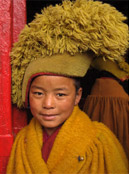
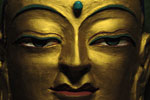
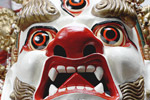
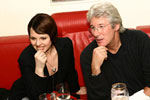
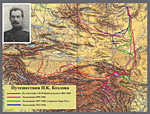
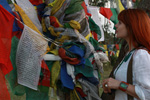
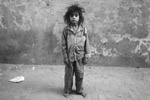
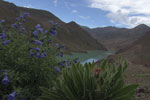

 For over twelve centuries Buddhist teachings (Dharma) deeply influenced and guided all aspects of Tibetan life and culture. This is very true in the case of Tibetan art, painting, and sculpture, the function of which is the expression and representation of religious themes. In Tibetan art one finds very little that has no religious meaning. In Tibet each well-established home has a separate shrine room with rich religious objects, which are honored with daily offerings. These religious symbols are a source of happiness, peace, and energy for those who possess Dharma eyes.
For over twelve centuries Buddhist teachings (Dharma) deeply influenced and guided all aspects of Tibetan life and culture. This is very true in the case of Tibetan art, painting, and sculpture, the function of which is the expression and representation of religious themes. In Tibetan art one finds very little that has no religious meaning. In Tibet each well-established home has a separate shrine room with rich religious objects, which are honored with daily offerings. These religious symbols are a source of happiness, peace, and energy for those who possess Dharma eyes.